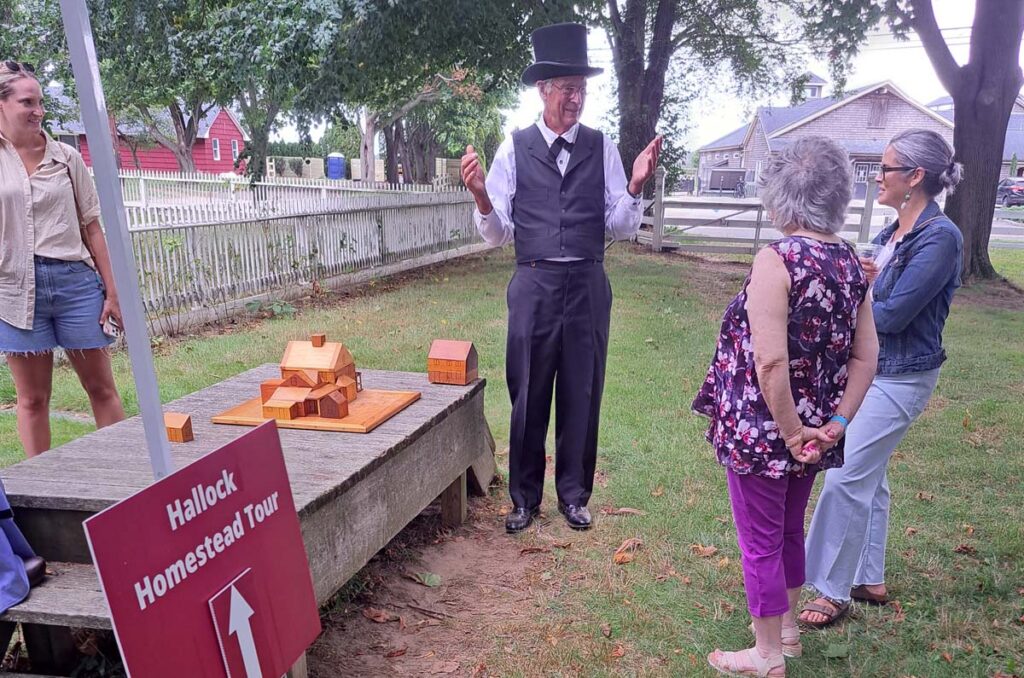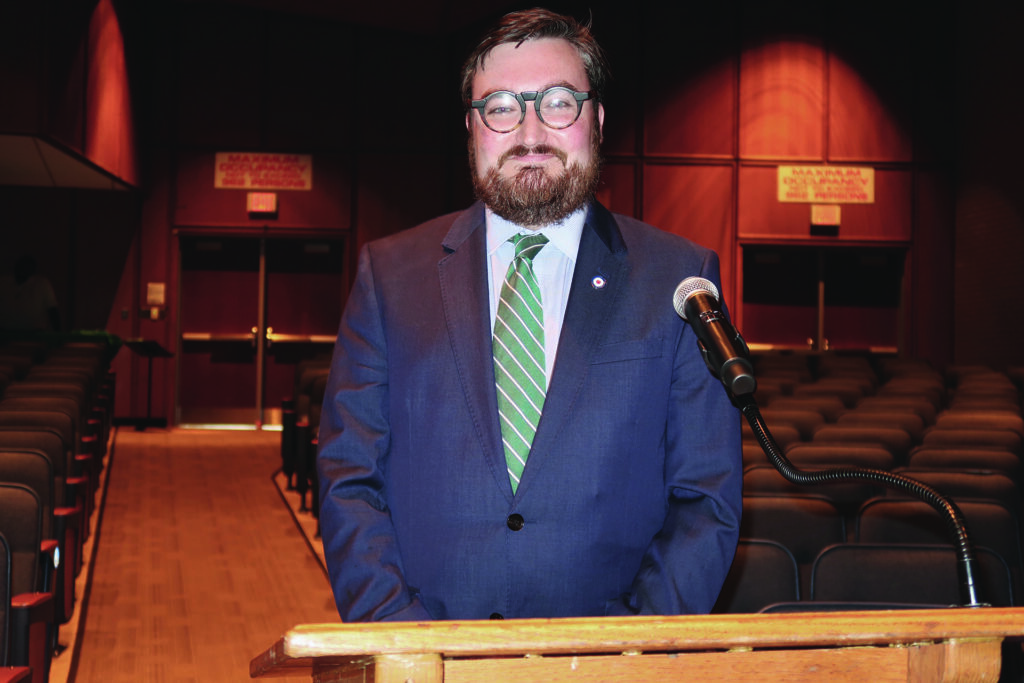Wading River resident recounts volunteer experience at the Mexican border

Lisa Votino made it crystal clear at the start of her discussion Monday night that there was not a lot of joy in the stories she was going to tell about her 2019 work in a Mexican border town, assisting migrants entering the U.S.
“This is a really difficult subject. There’s not a whole lot of happiness to be found in here, even when someone gains asylum,” she said. “That’s just sort of … a happy note in what otherwise was a very traumatic, tragic path to get there.”
The Wading River resident went on to vividly describe the heart-wrenching conditions she found when she first traveled to Mexico in January 2019, the month former President Donald Trump implemented the so-called Remain in Mexico policy.
She said she spent much of that year working at a community facility in Tijuana in conditions so tragic they left an indelible impression on her. She remains in contact with some of the people she worked with on the Mexican side of the border, just south of San Diego, she said, and continues to sponsor current asylum seekers.

When Ms. Votino initially traveled to Mexico, she said she didn’t have much direction.
“I went down there not knowing where I was staying, not knowing where I was going to work, not knowing who I was going to work with,” she said. “I literally just had a plane ticket.”
Displaying a picture she took of a chaotic border scene in Tijuana, she told the audience at Riverhead Free Library that “this is what I walked into.”
“This is not what I was prepared for in any way,” she said , describing conditions in the border town as a “war zone.” The migrant crisis at the southern border has spread to big cities across the country, where hundreds of thousands of migrants have been bused by border state governors in the past year. New York City alone has seen a massive influx of more than 113,000 migrants, prompting Mayor Eric Adams to declare earlier this month that if the ingress continues at its current pace, it would “destroy” the city. Last month saw record numbers of migrants stream across the U.S.-Mexico border, according to U.S. Customs and Border Protection.
Last week, the city dropped its lawsuits against the Town of Riverhead and dozens of other municipalities around the state — including Suffolk County — which had sought to preemptively prevent New York City migrants from being relocated to their communities using emergency orders.
A week earlier, Long Island Republicans, including Representative Nick LaLota and state Sen. Anthony Palumbo, called on Gov. Kathy Hochul to rescind the state’s “sanctuary” status. That status was self-designated by executive order of former governor Andrew Cuomo in 2017. The city’s designation was ordered by a court as part of a 1979 consent decree.
Arriving in Tijuana, Ms. Votino went to work at the community center — in a converted locker room at a former strip club.
“We provided really basic necessities for those who were waiting to turn themselves over for asylum,” she said,
“[and] for those who have newly arrived and had no idea of what was happening.”
She said the facility also had a landline.
“We timed calls to five minutes, so people could at least touch base with their lawyers or their families. Or if there was an emergency, [the phone] was there for them.” She said migrants would come to the center to charge electronics and get coffee, water and a daily lunch.
She said that basic necessities and facilities weren’t available to most migrants arriving at the border.
“We had a bathroom because, in Tijuana, you have to pay to use the bathroom,” she said. “So if you’re an asylum seeker and you don’t have any money and you’re homeless, guess where you’re going to go to the bathroom?”
Ms. Votino said the facility, which also had a shower, was an important haven in a notoriously dangerous border town, and a place for migrants to go during the day, when most area shelters were closed until the evening.
She said the violent gangs that many migrants were running from in their own countries “created syndicates at the border” to track them down. When she first arrived in January 2019, she said, she’d see a missing poster “every once in a while.” By her final trip in September, “everywhere, every place was plastered with missing persons posters.’
“Some of the people I worked with — I don’t know whatever happened to them. They’re just gone,” she said.
The International Organization for Migration, part of the United Nations, documented 686 deaths or disappearances of migrants on the U.S.-Mexico border last year, making it what the IOM described as the deadliest land route for migrants in the world.
In an effort to soothe some of their trauma, Ms. Votino brought in art supplies for the migrant children, but said she was thrilled to see how many adults joined in.
“What’s really important is that we were the only community space providing any of this in Tijuana,” she said.
She said that in addition to providing basic necessities, the group she worked with counseled migrants preparing to cross the border and present themselves for asylum.
She would tell them to expect a “credible fear” interview, “which is basically, ‘Do you fear for your life? Who are you running from in your country? Do you believe you’re going to incur harm if you return?’ Pretty simple, basic human rights stuff.” She said most migrants pass CFI tests.
Migrants are also given biometric tests and subjected to background checks. Biometric tests measure health indicators like blood pressure, weight and body mass.
Border Patrol agents have access to certain international criminal databases and can in some but not all cases determine whether an asylum seeker has a criminal record at home, Ms. Votino told the audience.
“This whole notion that we don’t know who asylum seekers are or where they are coming from is absolutely false,” she said.
She then held aloft a thick binder that appeared to contain thousands of pages of documents accrued by one of her sponsored asylum seekers, who passed away before the process was completed, noting, “This … is just some of his documentation.”
In some cases, Ms. Votino said, asylum seekers whose cases are seen through to the end compile five or six binders full of documents.
“Remain in Mexico,” officially known as Migrant Protection Protocols, is a Department of Homeland Security policy that required asylum seekers to wait in Mexico until their U.S. immigration court dates, which can take years.
About 70,000 migrants were subject to the policy between its January 2019 implementation and its suspension by President Joe Biden on his first day in office, Jan. 20, 2021, according to the Associated Press.
The program was criticized as inhumane for exposing asylum seekers to the threat of violence in Mexico and making it especially hard for the migrants to meet with their U.S. lawyers.
Various court battles ensued after Mr. Biden’s suspension of the policy, which was resurrected by court order. In June 2022, the U.S. Supreme Court ruled that the administration had the authority to end the policy, which it did.
Ms. Votino described two asylum-seeking men she worked with in Mexico, one from Venezuela and one from El Salvador. Both men made the same asylum claim at the same time at the same location. One was returned to Mexico and the other was detained in U.S. custody for 16 months.
“There was no rhyme or reason to it,” she said.
Ms. Votino said that she was not so much inspired as compelled to head to the border by her young daughter. In mid-December 2019, mother and daughter were watching a CNN news story about the border crisis when her daughter turned to her and asked, “Isn’t there anything you can do to help them?”
Within a month, she said, she was in Tijuana.








